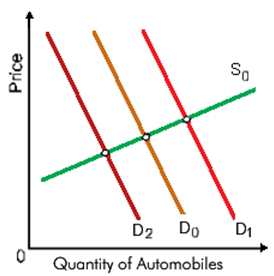Suppose that the auto started began at the intersection of S0 and D0, and then Congress passed a main personal income tax cut. So, how will it affect the auto market?: (w) No change. (x) Demand shifts to D2. (y) Demand shifts to D1. (z) Demand moves up along D0.

Can someone explain/help me with best solution about problem of economic...